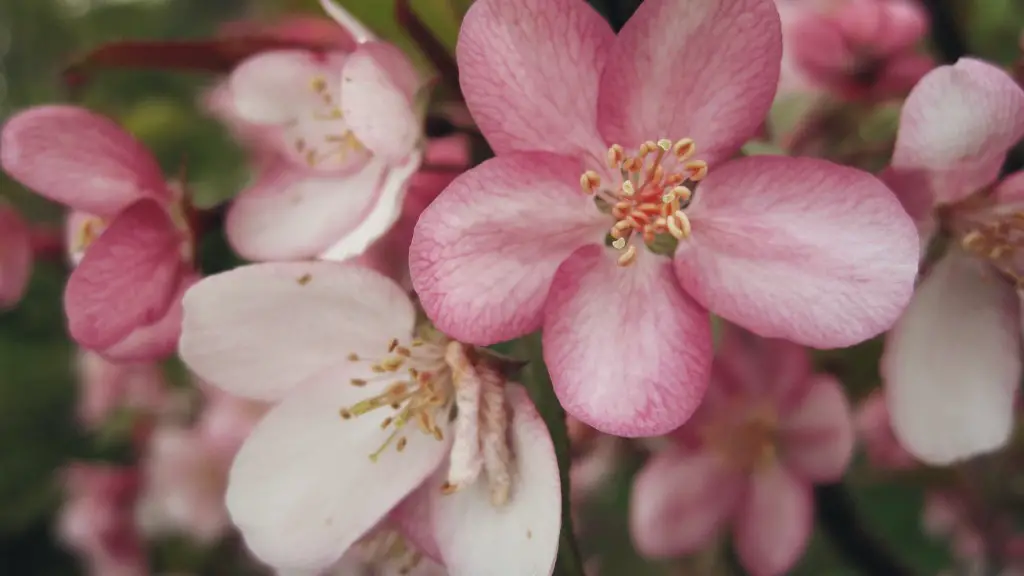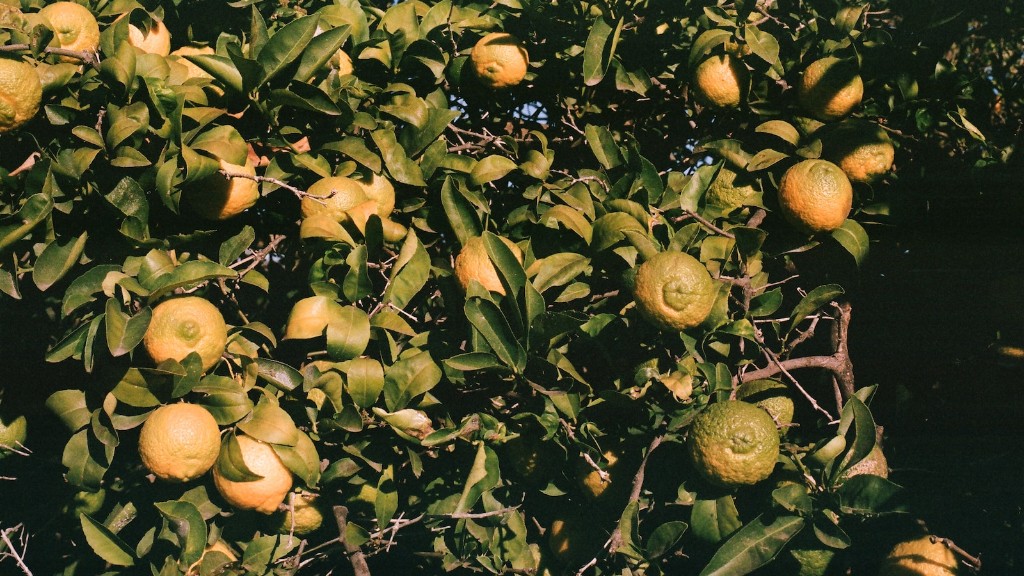Climate Change as a Possible Cause
Cherry tree leaves curling can be caused by several different environmental conditions, such as dry weather and climate change. Abrupt changes in temperature and in weather patterns can affect the health of any tree, citrus trees included. Changes in the amount of moisture in the atmosphere can cause some types of plants and trees to curl or droop their leaves. In particular, increased levels of carbon dioxide in the air have been known to have an overall effect on plant health. Rising global temperatures can also damage tree bark or lead to increased insect activity which can also damage leaves.
Weather is an incredibly important factor in plant and tree health, especially for those in the same location for long periods of time. A sudden influx of warm air has been known to cause leaf curling, but so can sudden chill or extremely dry days. For example, a significant change in temperature over a short period of time can cause botanical stress on the tree, reducing its ability to perform photosynthesis and draw in water and nutrients. Eventually, this can lead to curling leaves.
Curled Leaves Due to Pest Activity
One common cause of cherry leaves curling is infestation by pests. Aphids, caterpillars, thrips, and mites all feed on plant juices and can cause, among other things, foliage damage. High humidity and warm temperatures sparks increased pest activity which can damage leaves beyond the point of repair. Other common problems that can cause pest activity are old foliage and soil compaction, which damage the root system. In addition, insects such as scale crawlers can are also detrimental to the health of a cherry tree and can cause leaves to curl.
Solutions to pest infestation vary depending on the type of pest present. Treatments range from chemical use such as pesticide sprays or biological controls such as predatory insects, or even manual removal (for example, pruning back heavily infested parts of the tree). If possible, it’s wise to consider natural pest controls that are more environmentally friendly and equally if not more effective than chemical and artificial products.
Environmental Stress and Leaf Curling
Environmental stress is another possible cause of curling cherry tree leaves. Cherry trees tend to be more sensitive and delicate than some other types of trees and can demonstrate susceptibility to environmental stress– for example, winds, droughts, temperature fluctuations, and water runoff. Drought, in particular, can upset the balance of a cherry tree, leading it to curl its leaves in an effort to minimize transpiration and water loss.
Watering the tree during periods of drought is one way to combat this problem, but the timing and amount of water should be carefully considered. Too much water can actually lead to other problems such as leaf disease caused by fungi; too little can weaken the tree’s immunity and reduce the yields of the fruit.
Nutrient Deficiencies
Nutrient deficiencies, such as a lack of nutrients, minerals and other compounds, can also lead to leaf curling. Inadequate amounts of nutrients in soil can restrict the availability of water and nutrients to the root system, resulting in stunted growth, yellow or curled leaves and weakened immunity of trees. Regular fertilization of the trees should be carried out to ensure adequate nutrient intake, and adjusting soil pH levels can also help to reduce problems associated with nutrient deficiencies.
It’s also important to note that when cherry trees are planted, soil amendments such as gypsum or limestone can be added to ensure root system is supplied with sufficient nutrients. These amendments not only increase the nutrient availability in the soil, but also improve the structure of the soil to promote good drainage and root growth.
Sunburn
Sunburn is a common problem which can cause the leaves of cherry trees to curl. High levels of ultraviolet light, especially in combination with dry weather, can damage the leaves which can lead to them curling. Sunburn can be minimised by planting the trees in a shady spot, applying a sunscreen-like product to protect the leaves, or seeking out sun-resistant varieties of cherry trees.
The prevention of sunburn is important to ensure the health of the tree’s foliage, regardless of whether or not the leaves are curling. Sunburn can cause permanent damage to the leaves and can stunt future growth, as well as reducing the yield of the fruit.
Incorrect Pruning
Incorrect pruning is another potential cause of cherry tree leaves curling. Pruning should always be kept to a minimum and the parts of the tree that are to be cut or removed should be done so with care. Pruning too much can reduce the tree’s photosynthetic ability, causing a decrease in the availability of both water and nutrients which can result in weak, dry, or even yellow leaves. On the other hand, too little pruning can cause the leaves to become overcrowded and the tree to become stressed.
To avoid incorrect pruning, focus on removing weak, old and diseased branches, and make sure that the target branch is pruned at the appropriate area to avoid causing damage to the leaves. Pruning should also be done on a seasonal basis, preferably during the winter, when the tree is in a state of dormancy.
Lack of Drainage
A lack of drainage or a persistent waterlogged soil can also be a factor in causing the leaves of cherry trees to curl. Waterlogging reduces the oxygen content in the soil, depriving the tree’s roots of the air they need to absorb water and nutrients. If a tree is not receiving enough oxygen, photosynthesis cannot be performed correctly, leading to weakened growth and yellow-brown leaves.
To remedy this, check that the soil is aerated by digging around the tree and making sure that any water drains away. If necessary, an area of the garden can be re-contoured to provide better drainage, and mulch can be applied to the soil surface to help reduce the amount of run-off and keep the moisture in the ground.
Excess Water
Too much water can also be a cause of cherry tree leaves curling. Trees require a particular amount of water every day and if there is an excessive amount then the roots can become water-logged, starving them of the oxygen they need and impeding photosynthesis. Water-logged soil can also lead to issues such as root rot or fungal diseases which can, in turn, cause the leaves to curl.
The best way to combat this is to use a soil moisture meter and water the cherry tree in accordance with its requirements. Adding mulch when necessary can also help reduce water-loss from the soil, and adding compost can help to create a well-draining soil that can take in an appropriate amount of water.
Phytoplasma Infection
Finally, a phytoplasma infection can cause curling leaves in cherry trees. Phytoplasmas are parasitic micro-organisms which feed off the tree’s vascular system and cause discoloration of the leaves and stunted growth. Infection can result in resistance to medications and a weakened immune system of the tree.
Treatment of phytoplasma infection usually involves the removal of affected branches and then chemical treatments (such as fungicides or antibiotics) to protect the remaining healthy limbs. Once the treatments have been applied, fertilization and monitoring of the tree should follow to ensure the best levels of health.


